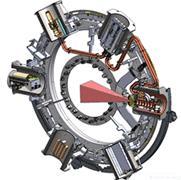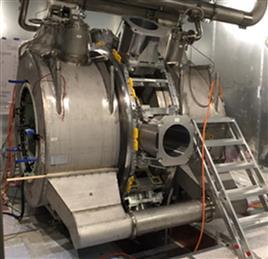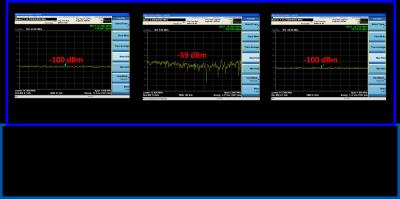2713
Magnetic and RF Shielding of a Novel Compact 6MeV Linac for MRI Guided Radiation Therapy System1ViewRay Inc, Oakwood Village, OH, United States
Synopsis
We report on successful testing of a novel magnetic and RF shielding technology for a 6MeV Linac for MRI guided radiation therapy system. It allows complete decoupling of the Linac and its components from the MRI system. A low field region is created where the Linac can be operated without any problems. The system is compact and allows positioning of all magnetically and RF sensitive Linac components on a rotating Gantry and treat patients from any angle.
Purpose:
To develop a method for isolating the MRI magnetic field from field-sensitive Linac (Linear accelerator) components at distances close to isocenter. Provide an effective RF shield that eliminates the MRI/RF noise from the Linac components.
Methods:
A MRI-guided radiation therapy system has been designed that integrates a Linac with simultaneous MR imaging. In order to accomplish this, the magnetron, port circulator, radiofrequency waveguide, gun driver, and Linac are placed in locations with low magnetic fields. The system is compact, so moving these components far from the main magnetic field and isocenter was not an option.Solution:
The magnetic field sensitive components of the Linac (exclusive of the waveguide) are placed inside the coaxial high permeability steel Sleeves that are electrically and mechanically isolated from each other [1]. The geometry of the Sleeves was optimized using E&M modeling software. Six sets of Sleeves were placed on the Gantry 60° apart, 87 cm from isocenter [2]. The Faraday-effect and the corresponding losses in the wave guide were avoided by orienting the waveguides perpendicular to the magnetic field of the MRI magnet, near its central axial plane of the MRI magnet.Results:
The magnetic field within the magnetic shields was measured to be less than 40 Gauss, which is significantly below the amount needed for the magnetron and port circulator to be operational. An in-house designed 40cm long 6MeV Linac was mounted on the existing ViewRay split 0.35T magnet. Additional mu-metal shields were employed near the e-Gun and the Target of the Linac to further reduce the magnetic field to less than 1 Gauss. The orientation of the RF waveguides allowed the RT transport with minimal loss and reflection. Fig.1 shows the schematics of the ViewRay Linac support assembly and shielding system. The RF shielding includes a combination of Copper and Carbon Fiber. Fig. 2 illustrates the practical implementation of the magnetic shielding. Fig. 3 illustrates the profiles of theoretically predicted (a) and measured (b) magnetic field components inside the Sleeves without mu-metal. Fig. 4 shows the measured effects of the employed RF shielding: (a) Linac is off: noise -100 dBm; (b) Linac is on and RF unshielded: noise rises to -59 dBm; (c) Linac is on and RF shielded: noise back down to -100 dBm. Fig. 5 shows the images taken without (a) and with (b) RF shielding. A double focused MLC was used for beam collimation. The Linac beam profile was measured and characterized.Conclusions:
One of the major challenges in designing a compact Linac based MRI-guided radiation therapy system that allows creating low magnetic field environments for the magnetic field sensitive Linac components has been solved. The measured magnetic fields are sufficiently small to enable system integration. System was shimmed to the specifications.Acknowledgements
No acknowledgement found.References
Sh. Shvartsman, G. DeMeester, J. Dempsey, J. Patrick, Method and apparatus for shielding a linear accelerator and a magnetic resonance imaging device from each other, US8836332, Sept. 16, 2014; US9421398, Aug. 23, 2016. 2. J. Dempsey, Sh. Shvartsman. Systems and methods for linear accelerator radiotherapy with magnetic resonance imaging, US9446263, September 20, 2016 .




